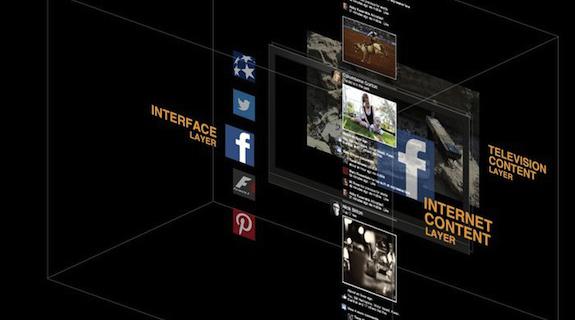If those who saw it remember one thing about the Stephen Spielberg film “Minority Report,” it generally involves Tom Cruise using hand gestures to manipulate his computer’s 3D images as they floated in space.
The film’s portrayal of gesture-based screen interactivity has become an enduring TV technology ideal, and not just because it would be really cool to move reruns of “How I Met Your Mother” through the air using our pointer fingers. As InAir, a new app-in-development from SeeSpace aims to demonstrate, floating gesture-controlled content has its practical value too.
Say, for example, you are watching the men’s final of the BNP Paribas Open tennis tournament between Roger Federer and Novak Djokovic, as this writer was last Sunday afternoon. And say watching Federer hit a backhand winner down the line compels you to read up on the legendary athlete and learn more about his dazzling playing style. This is entirely possible, what with the Internet at our fingertips and all. However, it’s also a bit of a drag to have to look away from the exciting tennis action to dig up the required secondary information on your laptop or mobile device of choice, then continue to look back and forth as you attempt to both follow the match and read all the way down to the end of the Wikipedia page.
InAir, having received a round of funding thanks to a successful Kickstarter last week, will theoretically alleviate this problem by making that same Wikipedia page float in the air alongside the image on your TV screen – or, whatever other online information source the surprisingly small HDMI cable decides to tap into. InAir’s patented content-recognition system automatically digs up info based on what you’re watching, then let’s you sift through what you want to see as different options float, hologram-style, alongside the main show.
Controllable by either a track-pad app on your mobile device or by Kinect hand gestures, InAir’s vision, according to the SeeSpace website, is “to revolutionize television by repositioning Internet content in the space in front of the television. We add ‘layers’ of information in front of the TV screen, allowing the Internet to ‘live’ in this space. We enable viewers to take full control and seamlessly combine the free flow of Internet information with broadcast content.”
That combining of info and content could be a major development for broadcasters, who often use second-screen engagement as a way to drive tune-in. Second screens, for the reasons mentioned above, create a flawed viewing experience. InAir is aiming to bring the first and second screens together, letting you watch both simultaneously, as one layers over the other. As SeeSpace’s Kickstarter project page mentions, “you can view a course map while watching a golf tournament, see actor or player profiles while watching a game or movie, and keep an eye on Twitter or Facebook, without interrupting the TV viewing experience.”
InAir has been developed by a team lead by co-founder Dale Herigstad, an Emmy-winning creator of digital experiences who just so happens to have helped create those visionary gestural interfaces first see in “Minority Report” in 2002. There’s no word on when the device will be available for purchase, but having raised more than $150,000 on Kickstarter, the company “is excited to move to the next stage in bringing you a great Augmented TV experience.”
Tags:













































__twocolumncontent.jpg)











